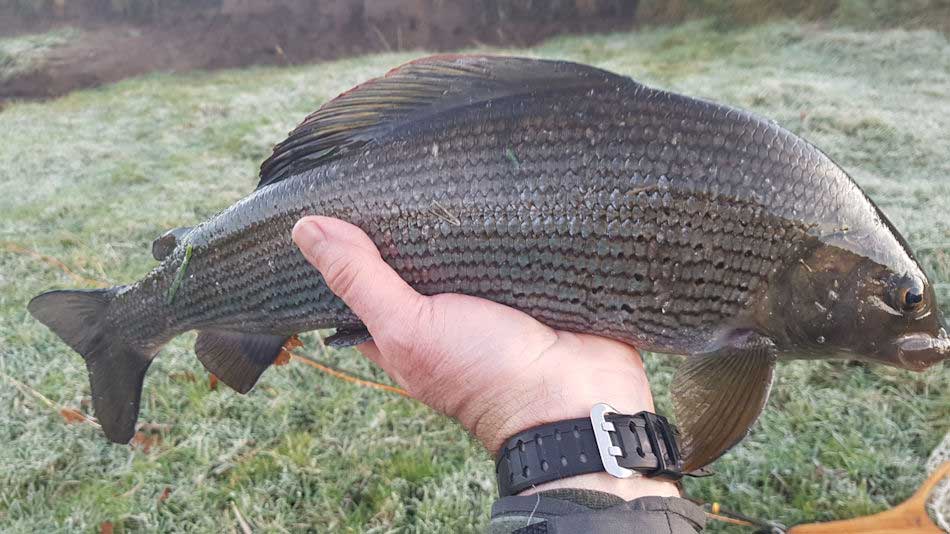Winter Grayling Fishing
Like most of the larger channels within the Tweed catchment, the water within the Peeblesshire TFA permit holds a healthy Grayling population and although numbers naturally vary from year to year based on conditions for survival, there’s always Grayling there to be fished for. Grayling within the Tweed system appear to prefer the larger, wider channels and as the river gets narrower upstream the numbers of Grayling get smaller and more spread out. However, in these areas the average size of the Grayling is slightly bigger and although there’s a chance of a specimen Grayling anywhere within the Tweed where Grayling are found, there’s a greater chance in these smaller waters.

As the Peeblesshire TFA has well over 20 miles of fishable water this begs the question – do I fish the lower reaches of the Association water and try to catch as many as I can, or do I fish the upper reaches around/above Peebles and try to catch “a monster” Grayling?
The current Scottish record Grayling, which actually came from the Upper Tweed, is just over 3lb. Grayling up to 3½lb are caught each year and there’s even some local whispers of 4lb’ers. Unfortunately the criteria needed to register a new record Grayling is difficult to meet on the riverbank as Grayling are classed as coarse fish for records. As a rough guide, a Grayling of around 50cm fork length has a 50/50 chance of being a 3lb’er, while one of around 55cm will be pushing 4lb.
Fishing for Grayling, especially in winter, is dependent on one major factor – keeping your flies hard on the bottom of the river for as long as possible. Grayling are bottom feeders and although they will occasionally rise for flies at the surface, at least 95% of their feeding is on the bottom of the river.
Techniques such as Czech and French Nymphing have been designed specifically for fishing flies on the bottom and both are perfect for Grayling. Search for either on Youtube, or a similar website, and you’ll find examples of both.
Nymph patterns are generally best for Grayling, although they really need to be weighted and a size 12 should be considered quite a big fly, by Grayling standards. Most anglers return the Grayling they catch and although there’s nothing wrong with taking the odd fish for the pot, tagging work on the River Tweed has shown that there can be multiple recaptures of individual Grayling in places where there’s any reasonable angling pressure.
Releasing Grayling can therefore improve the catches of the fishery and increase the average size of the fish caught as a single Grayling can potentially contribute to the catches of several anglers.
Although Grayling are fairly sturdy, due care should be taken whilst releasing them:- the fish should spend as little time out of the water as possible (ideally they should be un-hooked in the water although that’s not always possible) and care should be taken not to handle with dry hands and to avoid any type of squeezing, particularly of the soft belly, as this can result in internal damage and a slow and painful death for the released fish.
Please note that winter grayling fishing is only permitted on certain stretches of the river so anglers are requested to consult the beat map prior to commencing fishing.
Combined Season Ticket
Peeblesshire Trout Fishing Association now offers a combined season ticket which runs from 1st January until 30th September.
This ticket allows the angler to fish for winter grayling between 1st January and 31st March and for trout and grayling between 1st April and 30th September.
Day tickets for winter grayling are also available from our usual outlets.
Season Tickets
Season Tickets are available for a modest cost and can be purchased online via the link below.
